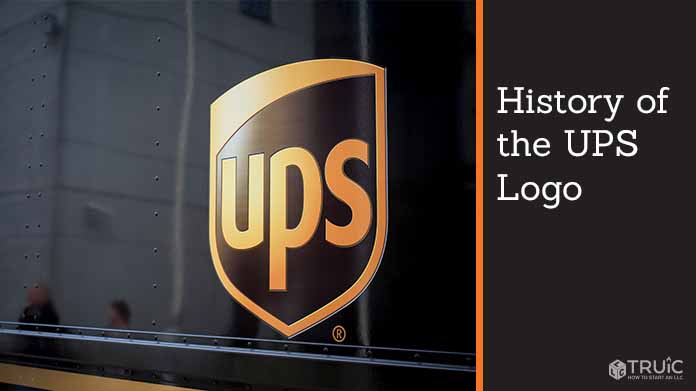History of the UPS Logo
UPS® is a household name thanks to its long history and reliability. Among company logos, UPS stands out thanks to its overall simplicity. After decades of consistent branding and use of the iconic “UPS Brown,” the company has simplified its logo more than ever but retained its worldwide fame.
The logo’s history is complex, but each revision ultimately circled back to the same shield emblem and a similar brown shade. The logo’s revisions reflect design trends and migration toward modern standards with its newest version.
Business owners can use the design principles embodied by the UPS logo in their own companies. With design tools like our free logo generator, even small startups can tackle logo creation on their own. Before getting started, take a look at the rationale used in crafting the UPS logos for inspiration.
Inspiration for the Logo
The original UPS logo in 1916 had an eagle carrying a package on a shield-shaped background. This set of symbols was chosen deliberately, with the eagle representing speed and the shield representing the reliability of the service. UPS’ first slogan was “safe, swift, secure,” and the slogan and iconography caught on quickly with customers.
The original logo used shades of brown and yellow-gold, similar to the colors used today. Brown became the base color for trucks and uniforms because it hid dirt well and matched Pullman train cars. The logo used this color to maintain consistent visual branding.
UPS founder James Casey reportedly wanted the original UPS trucks to be red, then settled on yellow. However, after someone convinced him that solid yellow trucks would be too flashy, he only used yellow in the logo instead.
Starting to Change
Over the next century, UPS changed its logo four times. The second logo removed the eagle and incorporated the letters UPS in large font. The slogan on top read “The Delivery System for Stores of Quality” with “Since 1907” in a ribbon on the bottom. This ornate logo matched the standards of the time but still incorporated the original shield background.
The next version of the UPS logo included a rectangular package with a string tied on it as part of the shield. This revision was created by famous designer Paul Rand, who argued that the package design evoked memories of presents and added an emotional element to the logo. Rand also reduced the logo’s colors to a simple black outline, which was changed to yellow when displayed against a brown background.
UPS executives initially pushed back on the logo, but Rand insisted it was the best choice. In the end, UPS used that logo from 1961 to 2003, making it the longest-running logo.
The UPS Logo Today
In 2003, the UPS overhauled its logo to resemble a simplified version of the 1937 logo. The package icon from Rand’s design was removed, and the white background returned to its original brown. The new designers brought gold back into the new logo as well, with a subtle gradient giving dimension to the shield shape.
A minor logo revision in 2014 removed the gradient, flattening the gold and brown colors. However, the overall themes and shapes are still present in the current UPS logo, avoiding the dramatic overhaul that occurred in 2003.
Font and Color Simplification
One of the biggest changes in the UPS logo over the years is the push toward simplification. The original logo was elaborate, and even the first version without the eagle had many details that didn’t show up well when printed in small sizes.
With the widespread incorporation of logos onto business cards and websites came a push for companies to simplify their logos. Even UPS’ 1961 logo with the package emblem would not have shown up well at some sizes because of the tiny ribbon detail.
In the end, the logo moved toward a highly simplified version of the 1937 logo. The overall font and color scheme are similar but much less detailed, which shows up when using smaller sizes. The current version of the logo even took out the subtle color gradient introduced in the 2003 logo because gradients are no longer considered modern.
Lessons Learned
The UPS logo is significant for its use of brown, which is usually not a popular color for logos. However, it’s because the color is unusual that UPS has managed to become such a recognizable brand worldwide. Even after Paul Rand’s redesign, UPS made sure to keep its brown trucks and uniforms the same and still used brown in parts of many UPS stores.
Regardless of what industry they’re in, business owners should take the UPS success story as a model for exceptional branding and logo design. Creating a sleek yet unique design seems tricky initially, so we reviewed the top 5 best logo makers of 2021 to help you create a unique logo for your small business.




